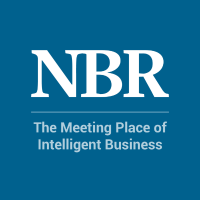 I’ve started writing a monthly column for a business weekly in New Zealand called The National Business Review. The first column was online recently and looked at the Singularity Summit in NZ, and set the tone for future columns.
I’ve started writing a monthly column for a business weekly in New Zealand called The National Business Review. The first column was online recently and looked at the Singularity Summit in NZ, and set the tone for future columns.
The column can be on the NBR site here or below:
Not many conferences in New Zealand attract more than 1400 people. Even fewer – perhaps none – of this size include a diverse range of professional directors, politicians, chief executives, teachers, university students, entrepreneurs and school pupils.
One that did was the three-day Singularity Summit in Christchurch. On stage were experts from Silicon Valley and New Zealand discussing how rapidly changing technologies would affect the world.
What was startling for many attendees is that many of these disruptive innovations aren’t vague predictions but are already in use – or about to be.
Science fiction author William Gibson once famously remarked that the future is already here – it’s just unevenly distributed. The truth of this was highlighted at the summit as speakers gave example after example of how entire industries are going to be upended as technology advances.
Given the audience size, this is clearly a hot topic and something that a lot of people are grappling with.
On the last day of the summit I talked to David Roberts, the opening and closing speaker, to get his insight on the level of interest.
“I think there really is something happening right now,” Roberts says. “My sense is that we’re at an inflection point.”
The international speakers were well placed to observe inflection points as many of them are members of the Singularity University – a think tank based in the heart of Silicon Valley. The name has its origin in a concept that speculates artificial intelligence will surpass human intelligence in the next few decades, leading to a technology singularity where computers outperform people.
While the concept of the singularity is controversial, it’s clear the world our children will inherit will have a dramatically different working environment to the one we know today.
Software running on extremely fast computers can already perform better than humans in a range of intricate tasks, including driving cars, flying planes and playing complicated games.
Technology has enabled some startling developments.
University of Auckland researcher Mark Sagar began his presentation with a relatively dry discussion about creating computing “building blocks” for designing virtual avatars.
His work aims to create super-realistic computer-generated faces that respond to external stimuli just like a real person.
For example, staying within the view of a laptop camera means that the software can “see” a human face. This then triggers the software model to release virtual oxytocin, a neurochemical that is related to trust and bonding.
The end result is that the virtual face – which is controlled by the virtual brain – starts to smile.
“It’s like a Lego system for building brains,” he casually mentioned just before he showed the audience exactly what he meant.
At this point it’s fair to say Dr Sagar is a man who knows how to capture your attention. When he demonstrated the end result on screen there was an audible gasp as the audience watched him interact with an extraordinarily life-like baby – or at least its face.
Using only his laptop, Dr Sagar’s virtual baby smiled when it was talked to and got anxious when he moved out of camera view. Although it couldn’t “see’ the audience” if it could it would have seen 1400 jaws drop open.
Plenty of other jaw-dropping moments occurred during the event and at the end of the three days it was certain few organisations would be immune to an increasing pace of technology change.
While making predictions about the future is notoriously difficult, from a strategic standpoint it’s increasingly important to develop the capability to have an over-the-horizon view.
In a series of monthly columns I will take a closer look at some of the risks and opportunities presented by rapidly changing technology in areas such as driverless cars, artificial intelligence, employment, politics and the role of New Zealand organisations.
Copyright NBR. Cannot be reproduced without permission.
Read more: https://www.nbr.co.nz/opinion/fast-forward%C2%A0-roger-dennis-hold
Follow us: @TheNBR on Twitter | NBROnline on Facebook